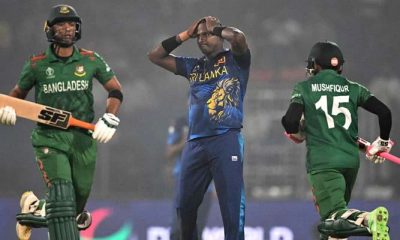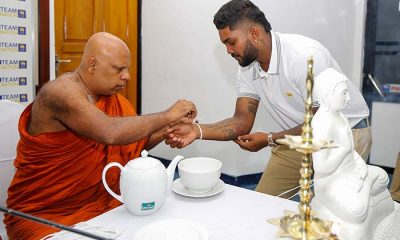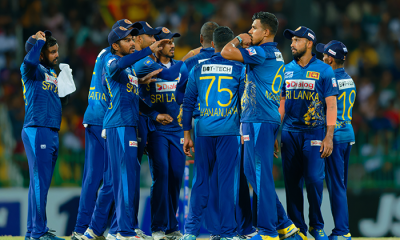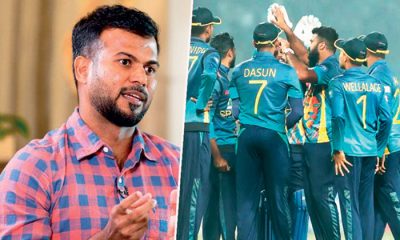Sports
How two World Cup tickets changed cricket’s power bases
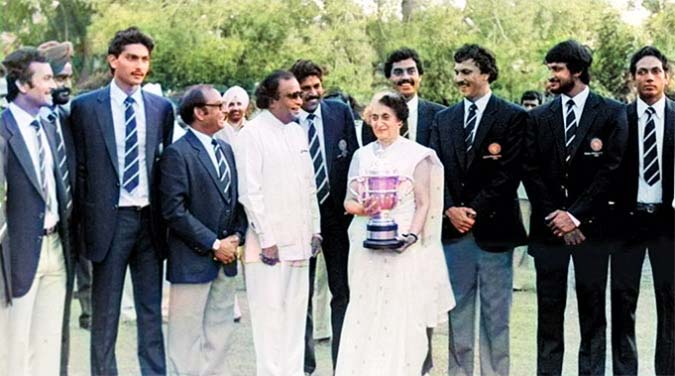
Rex Clementine
in Delhi
Literally, nobody expected India to reach the finals of the 1983 World Cup, leave alone winning it. In the previous edition of the tournament – in 1979 – they had even lost a game to Sri Lanka, who were yet to get Test status. But suddenly when Kapil Dev’s team entered the finals, the team had not only reached a new high but a stage was set to change the power bases of cricket too, rather accidentally.
India’s Minister of Education Siddhartha Shankar Ray is on a state visit to the UK. He approaches Indian Cricket Board President N.K.P. Salve, who was also a Cabinet Minister, to ask whether he could get two tickets for the game.
Those days ICC was run by MCC with Lord’s being the headquarters of the sport and MCC President becoming the ICC President automatically.
MCC turns down Salve’s request for two tickets for the final. The Indian board chief finds out that seats at the pavilion reserved for MCC members are empty. Obviously, MCC members aren’t interested in attending a game where England aren’t playing.
Once India create an upset by beating defending champions West Indies in the final, Salve returns home a determined man. He wants to move the next World Cup out of England. But that’s going to be a gigantic task.
Back in India, he calls for a meeting involving other regional heads of cricket such as Gamini Dissanayake and Nuzki Mohammad from Sri Lanka, Air Marshall Noor Khan from Pakistan and so on.
There they agree that the next World Cup should be held in Asia. Salve approaches Indian Prime Minister Indira Gandhi and relates his ambitious plans. He confides that he will struggle to get the finances to host such a mega event.
Mrs. Gandhi, the iron lady, promises him a blank cheque. Salve can go ahead with his plans for the World Cup. So how does she do it? She calls up business tycoon Dhirubhai Ambani, the founder of Reliance Group and father of Mukesh Ambani. The blank cheque is guaranteed.
When the matter is taken to ICC, England are furious and are determined not to let go of the sport’s showpiece event. But Salve had done his homework and played his cards smartly. He had come to a deal with Australia that they would get the chance to host the next World Cup in 1992. Australia agree provided there’s a secret ballot and not an open ballot.
Having brought the World Cup to Asia, Salve’s next move is to make sure there is a fair playing field for all cricketing nations, and he works rigorously to rid founding members of the ICC their veto powers.
This he does by promising member boards equal share of revenues and very soon, England and Australia lose their veto power.
Until very recently, the Indian board worked hand in hand with regional allies. But once they had total power, they wanted to do it solo. What has happened to the Asian solidarity? This is the first World Cup being held in Asia in one country. Always it used to be a joint effort.
Easily, India could have given Sri Lanka half their games to be held in Colombo and let Pakistan and Bangladesh play some of their games in Lahore and Dhaka. You can only wish sanity prevails.
Nobody has complained openly for everyone fears the Indian board. But you can see there are murmurs.
World cricket owes much to N. Salve for breaking England’s clout in the game. A chartered accountant from Nagpur. His parents were both freedom fighters and you can sense from where he got the guts to take on the establishment.
As for Mrs. Gandhi, sadly a year after giving the greenlight for the World Cup to be brought to Asia, she is gunned down by her own security guards. ‘Operation Blue Star’ that she had authorized to take the Sikh militants down, didn’t go down too well with the Sikhs. The military operation was a success, but in the process the forces desecrated the Golden Temple in Amritsar, the Sikhs’ holiest shrine.
As for Sri Lanka, they have been India’s closest ally. Australia once tried to diminish India’s power base by getting former Prime Minister John Howard as the President of the ICC. Howard had agreed to come on board on one condition. That was to get elected uncontested.
India did not object. They just kept quiet. Instead, they used Sri Lanka as a cat’s paw to object to Howard becoming the cricket boss. Sri Lanka’s objections were flimsy. But Maitland Place doesn’t care. All what they want is India to come to Colombo once in two years and play five ODIs and their cricket is set for a few years. And that’s the way the cookie crumbles!
Sports
England face Australia in the battle of champions
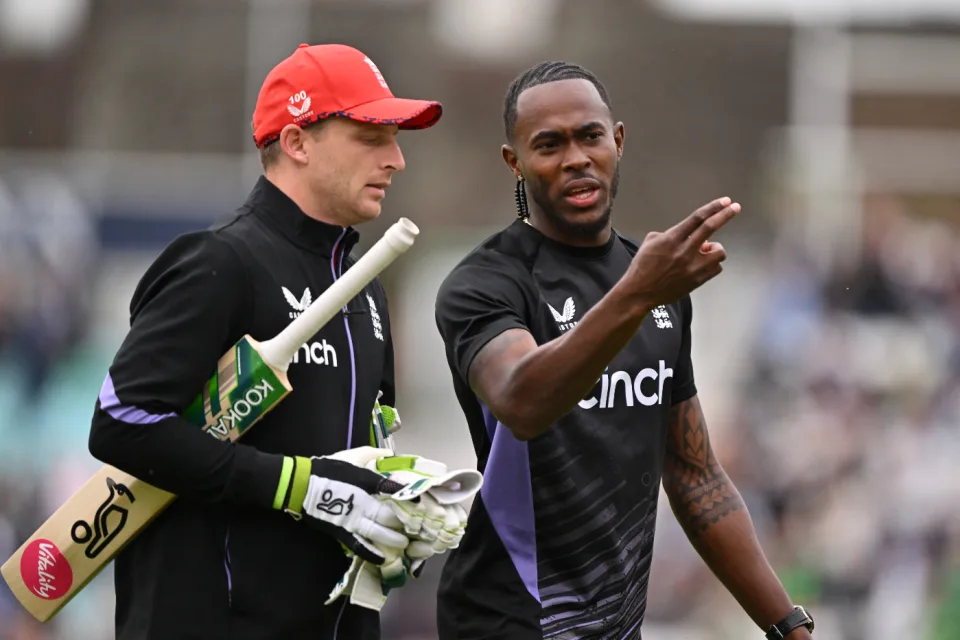
The first truly heavyweight clash of this expanded T20 World Cup format comes freighted with both history and subplots. A rematch of the 2010 World T20 final at Kensington Oval, the match pits Jos Buttler’s defending champions – who are aiming to become the first team to retain the trophy – against the Australian winning machine, victors at the 2021 edition and current world title-holders in Test and ODI cricket. And that’s before you throw in the Ashes for afters.
Already there is added pressure on England, after the rain in Bridgetown led to a share of the points in their opener against Scotland (and that having conceded 90 runs from 10 overs without taking a wicket in a tepid bowling display). Lose to their oldest rivals and it will leave their Super 8 prospects open to being waylaid by the perils of net run-rate calculations, or worse.
The Scotland match was the third abandonment in five suffered by England, after a rain-affected home series against Pakistan, which has clearly hampered their readiness for this campaign after almost six months without playing T20 together. It does not take much for a side to click in this format – and England looked in decent shape when they did get on the field against Pakistan – but Buttler will be anxious for things to go their way on Saturday, if only to avoid further questions referencing the team’s disastrous ODI World Cup defence last year.
Australia, under the laidback leadership of Mitchell Marsh would love nothing more than to add to the English sense of jeopardy – having helped bundle them out of the tournament in India on the way to taking the crown. Their head to head record is less impressive in T20 however, with England having won six of the last seven completed encounters, as well as that 2010 final.
Despite a wobble with the bat, Australia avoided mishap against Oman earlier in the week, the experience of David Warner and Marcus Stoinis shining through in difficult batting conditions. Surfaces in the Caribbean – not to mention those games staged in the USA – have already had teams scratching their heads; rather than the “slug-fest” England had prepared for, following a high-scoring tour of the Caribbean in December, it looks as if boxing smart may be the way to go.
Speaking of Warner, this could be the last time he faces up against England in national colours – and another match-winning contribution would likely reduce the chances of them meeting again in the knockouts. On the other side of the card is Jofra Archer, fresh from an emotional maiden outing at Kensington Oval and ready to take on Australia for the first time in any format since 2020. Can Mark Wood fire up England’s campaign, as he did during last summer’s Ashes? Will Pat Cummins be back to harass the old enemy once again? Seconds out, it’s almost time to rumble.
Cummins is set to return after being rested for the Oman game, which saw Mitchell Starc leave the field with cramp. Starc is understood to be fine and could keep his place – which would likely see Nathan Ellis miss out. Marsh is still not fit to bowl, with Australia likely to continue with the allrounder combination of Stoinis and Maxwell to give them cover.
Australia (probable XI): David Warner, Travis Head, Mitchell Marsh (capt), Glenn Maxwell, Marcus Stoinis, Josh Inglis (wk), Tim David, Pat Cummins, Nathan Ellis/Mitchell Starc, Adam Zampa, Josh Hazlewood
The one change England may consider is Reece Topley coming in for Wood, with the expectation that there will be some rotation among the seamers through the course of the tournament.
England (probable XI): Phil Salt, Jos Buttler (capt & wk), Will Jacks, Jonny Bairstow, Harry Brook, Liam Livingstone, Moeen Ali, Chris Jordan, Jofra Archer, Adil Rashid, Reece Topley/Mark Wood
[Cricinfo]
Sports
South Africa up against their bogey team in batter-unfriendly New York
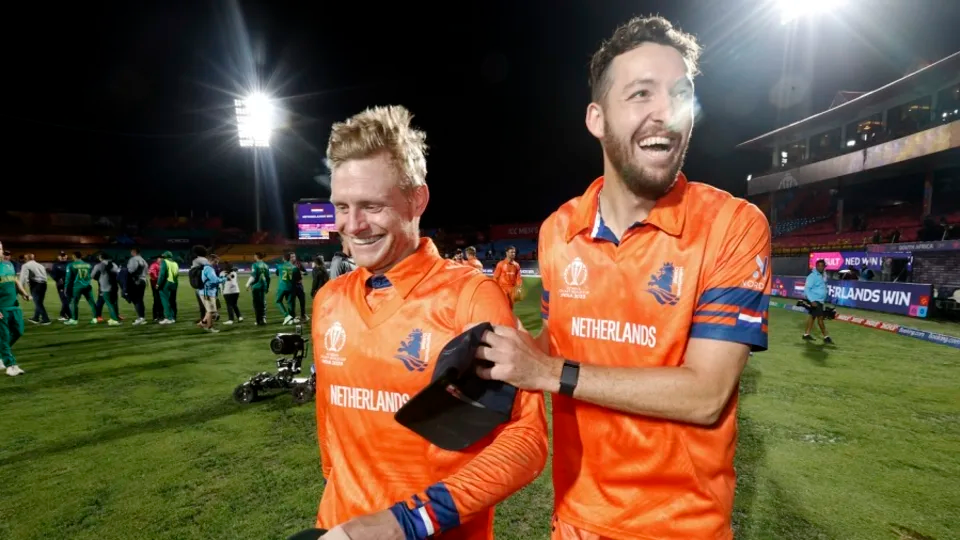
Once is coincidence, twice is a clue, and three times is proof.
To paraphrase Agatha Christie, that is the narrative around South Africa’s meeting with Netherlands at this T20 World Cup.
The Dutch beat South Africa at the 2022 tournament and ended their semi-final hopes in a match where South Africa appeared to be sleep walking, and then beat them again at the 2023 ODI World Cup, where they exposed South Africa’s vulnerability in the chase. If they to do the treble, not only will Netherlands take the lead in Group D, but they will offer conclusive evidence of the threat they pose to Full Members, especially South Africa.
Of course, it will take some doing after South Africa’s opening performance against Sri Lanka, where they reduced their opposition to their lowest T20I total and chased it down in fairly straightforward fashion thanks to the most stable middle-order of their white-ball era. In Aiden Markram, Tristan Stubbs, Heinrich Klaasen and David Miller, South Africa have bankers and big-hitters and, for this match, they also have the advantage of experience. They’ve already played at Eisenhower Park, and have first-hand knowledge that run-scoring doesn’t come easily;Klassen said they are prepared to use their “cricket brains” and play “smarter cricket”.
But the conditions could be good news for Netherlands, who are not naturally a line-up of big hitters and build their innings on a foundation of turning ones into twos. In other words, they tend to take a slightly more conservative approach to batting, which may work well here, but they’ll be wary of the uneven bounce of the surface and will have to come up with plans to counterattack especially against South Africa’s seamers. Their own bowlers were exemplary in Dallas and will look to build on that performance against a line-up that will likely be more proactive than Nepal’s, but who they have managed to keep quiet not once, but twice in the past. Third time’s the charm, they say.
Anrich Nortje’s stunning return to form against Sri Lanka means South Africa may not have to tinker with the bowling combination, and Gerald Coetzee and Tabraiz Shamsi may have to wait their turns to get a game. The batting line-up should be unchanged, with no space for Ryan Rickelton yet.
South Africa: Quinton de Kock (wk), Reeza Hendricks, Aiden Markam, Tristan Stubbs, Heinrich Klaasen (wk), David Miller, Marco Jansen, Keshav Maharaj, Kagiso Rabada, Ottneil Baartman, Anrich Nortje
Conditions in New York may tempt Netherlands to include an extra seamer and they have Kyle Klein in their squad. But it could come at the expense of a shortened batting line-up and they may not want to risk that.
Netherlands: Michael Levitt, Max O’Dowd, Vikramjit Singh, Sybrand Engelbrecht, Scott Edwards (capt, wk), Bas de Leede, Teja Nidamanuru, Logan van Beek, Tim Pringle, Paul van Meekeren, Vivian Kingma
[Cricinfo]
Latest News
Mustafizur, Rishad, Hridoy dazzle in Bangladesh’s tight two-wicket win over Sri Lanka
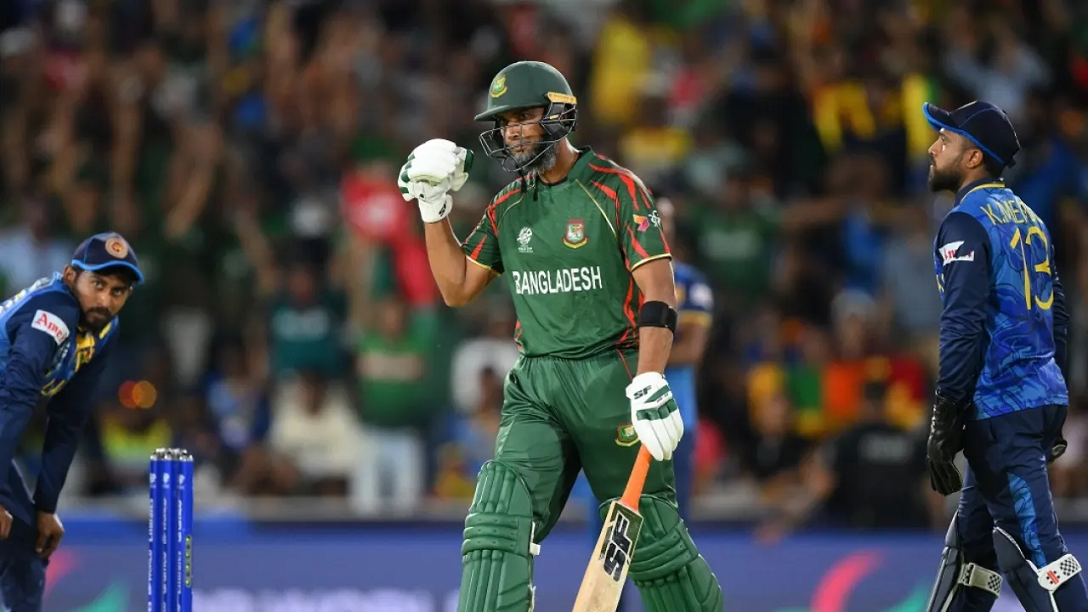
Nuwan Thushara’s last over brought Sri Lanka screaming back into the match,as he first bowled Rishad Hossain, and then nailed Taskin Ahmed in front of the stumps with a pinpoint swinging yorker. This left Bangladesh eight wickets down, with 12 runs still to get.
However, the experienced Mahmudullah was at the crease for Bangladesh, and despite some further nervy moments, pushed Bangladesh across the line off the last ball of the 19th over.
But this was a match chiefly decided by Bangladesh’s own outstanding bowling. Mustafizur Rahman was the best among them, using shorter lengths and his cutters efficiently, to claim figures of 3 for 17. Rishad Hossain’s three-for through the middle overs also kept Sri Lanka quiet.
Mustafizur was instrumental in Sri Lanka’s downward spiral through the middle overs, which culminated in a crash-and-burn end. Ultimately, their inability to find boundaries, or even rotate strike against good Bangladesh bowling resulted in their downfall. A score of 125 for 9 always seemed poor on a decent pitch, even if their bowlers made a match of it in the end.
Brief scores:
Bangladesh 125 for 8 in 19 overs (Towhid Hridoy 40, Litton Das 36; Dhanajaya de Silva 1-11, Nuwan Thushara 4-18, Wanidu Hasaranga 2-32, Matheesha Pathirana 1-27) beat Sri Lanka124 for 9 in 20 overs (Pathum Nissanka 47, Dhananjaya de Silva 21; Tanzim Hasan Sakib 1-24, Taskin Ahmed 2-25, Mustafizur Rahman 3-17, Rishad Hossain 3-22) by two wickets
[Cricinfo]




